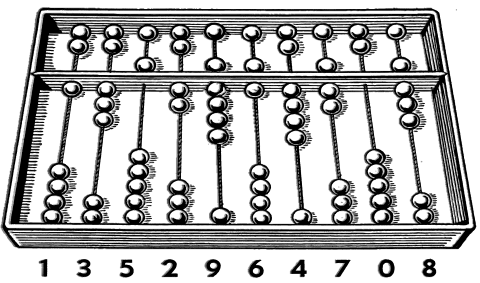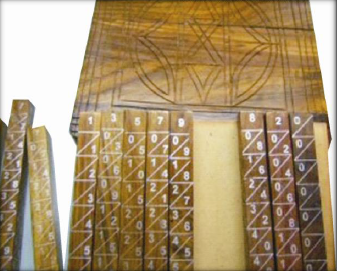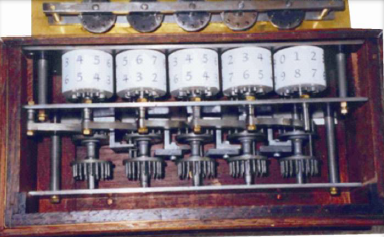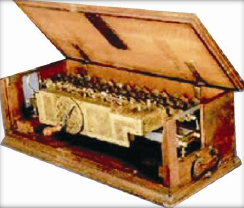Name at least four early calculating devices.
Question :
Name at least four early calculating devices.
1) Abacus : Abacus was discovered by the Mesopotamians in around 3000 BC. An abacus consisted of beads on movable rods divided into two parts. (Fig-1) Addition and multiplication of numbers was done by using the place value of digits of the numbers and position of beads in an abacus.

The Chinese further improved on the abacus so that calculations could be done more easily. Even today abacus is considered as an apt tool for young children to do calculations. In an abacus, each row is thought of as a ten’s place. From right to left , row no-1 represents the one’s column and the second column represents ten’s place. The third column represents the hundred’s place and so on. The starting position of the top beads (representing the value of five) is always towards the top wall of the abacus while the lower beads (representing the value of one) will always be pushed towards the lower wall as a starting position.
2) Napier’s Logs and Bones : The idea of logarithm was developed by John Napier in 1617. He devised a set of numbering rods known as Napier’s Bones through which both multiplication and division could be performed. These were numbered rods which could perform multiplication of any number by a number in the range of 2-9. There are 10 bones corresponding to the digits 0-9 and there is also a special eleventh bone that is used to represent the multiplier. By placing bones corresponding to the multiplier on the left side and the bones corresponding to the digits of the multiplicand on the right , the product of two numbers can be easily obtained.

3) Pascaline : Blaise Pascal, a French mathematician invented an adding machine in 1642 that was made up of gears and was used for adding numbers quickly. This machine was also called Pascaline and was capable of addition and subtraction along with carry-transfer capability. It worked on clock

work mechanism principle. It consisted of various numbered toothed wheels having unique position values. The addition and subtraction operations was performed by controlled rotation of these wheels.
4) Leibnitz’s Calculator : In 1673 Gottfried Leibnitz, a German mathematician extended the capabilities of the adding machine invented by Pascal to perform multiplication and division as well. The multiplication was done through repeated addition of numbers using a stepped cylinder each with nine teeth of varying lengths.
